Extremely RARE pair of early 1800s primitive tin chukar, pheasant or duck decoys
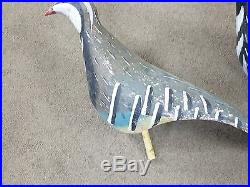
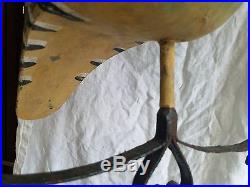
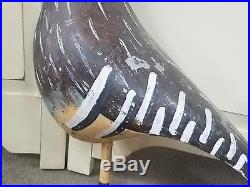
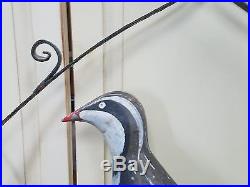
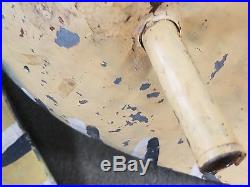
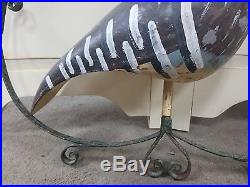
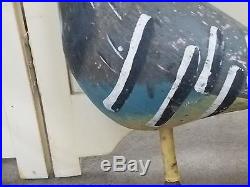
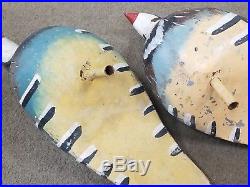
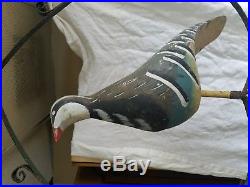
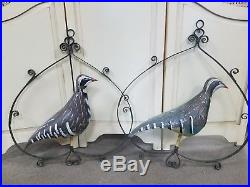
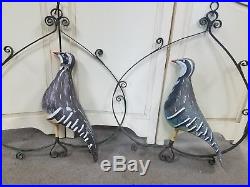
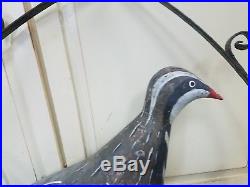

This is a very rare PAIR of antique tin duck decoys dating to the early 1800s. It took me a long time to figure out what they were, because the birds were made separately from the metal wrought iron holders, hence the confusion. If you research primitive chukar hunting decoy, I was able to find an almost exact replica of ONE of the decoys. Looking at many duck decoy websites, this is the first pair I have ever seen together.
Please note - I will NOT separate these decoys! They have been together for a very long time! Basically you have two hollow tin decoys, with the wrapped tin at the base that would be placed on a wood piece in a marshy area to attract other birds.The wrought iron pieces that hang the decoys are very early, but I do not believe they were part of the actual decoy. I think at some point of time, even very early on, someone made the iron pieces from hand as a way to hang the decoys. The hollow part of the bird's base slips onto the wrought iron, so they can each hang as a pair. The colors are of a male and a female.
In some countries these birds are known as love birds. The paint is wonderful and still very much intact, and these are just a rare pair that someone kept together for nearly 200 years (dating is difficult, but I believe early 1800s). Condition is very good for the age. Please look at the photos. One of the birds (the left one in pictures) has slightly more wear, specifically around the neck, than the other bird. Someone has varnished the green metal hangers, preserving the lovely chippy green paint.The birds themselves do not have any varnish that I can see, they are simply well preserved as I imagine they were inside most of their existence. These are an amazing and rare pair, the highlight of any early decoy collection.
Measurements: Bird height nose to tail 21 inches. Bird width about 15 inches. Metal hangers 28 inches tall, width is 2 feet. These are very large with the hangers, and certainly make a fabulous statement!
The item "Extremely RARE pair of early 1800s primitive tin chukar, pheasant or duck decoys" is in sale since Friday, July 21, 2017. This item is in the category "Sporting Goods\Hunting\Vintage Hunting\Duck Decoys". The seller is "kakakahorses" and is located in Berthoud, Colorado.
This item can be shipped to United States.
- Duck Type: chukar or pheasant?
- Material: tin
- Features: Antique
- Country/Region of Manufacture: United States
